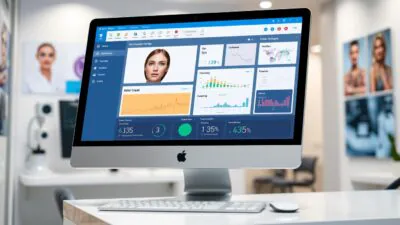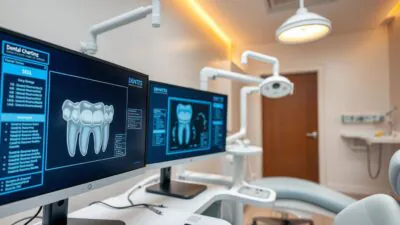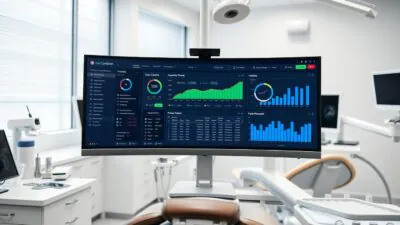FTC disclaimer: This post contains affiliate links and I will be compensated if you make a purchase after clicking on my link.
In today’s fast world, labs need to manage data well and work smoothly. This is where Laboratory Information Systems (LIS) help. They change how labs handle and share important data. But, with many LIS options, picking the right one can be hard.
Find out about the top 11 Laboratory Information Systems changing lab work. These software solutions have many features. They help automate tasks, make data more accurate, and make labs work better. They are great for small or big labs, helping them serve patients better.
Key Takeaways
- Laboratory Information Systems (LIS) are key for modern labs, making work easier and data better.
- Choosing the right LIS can improve data, work flow, and care for patients.
- Top LIS solutions have many features like managing samples, automating work, connecting with instruments, and detailed reports.
- When picking an LIS, think about how easy it is to use, how well it integrates, how customizable it is, and how safe it is.
- Getting a strong LIS can make labs work better, cut down on mistakes, and help make decisions based on data.
What is a Laboratory Information System (LIS)?
A Laboratory Information System (LIS) is a software that changes how labs work today. It’s a digital tool that makes lab work easier and faster. It helps labs track samples, manage data, and follow rules better.
LIS software makes labs more efficient and accurate. It helps pathology labs, clinical labs, and research centers a lot.
Definition of LIS
A Laboratory Information System is like the brain of a lab. It connects with lab tools and systems. This lets data flow smoothly and tasks get done automatically.
LIS is made to handle lab work’s complex tasks. It’s key for managing medical tests and lab info.
Key Functions of an LIS
- Sample data management: Tracking and storing info about patient samples.
- Workflow automation: Making lab processes smoother, like handling samples and reporting.
- Integration with lab instruments: Connecting LIS with lab tools for better data exchange.
- Compliance and regulatory management: Keeping up with rules like CLIA and HIPAA.
- Reporting and analytics: Creating reports and insights for better decision-making.
Importance in Modern Laboratories
LIS is very important in today’s medical and research world. It boosts lab productivity and patient care. It makes labs work better by automating tasks and giving real-time data.
LIS helps labs stay up-to-date and efficient. It ensures labs give accurate and timely results to doctors and patients.

Top Features to Look for in an LIS
When picking a Laboratory Information System (LIS), focus on features that make your Diagnostic Workflow Optimization better. Look for a system that’s easy to use, integrates well, can be customized, and keeps your data safe.
User-Friendly Interface
The LIS should be simple to use. It should let lab workers easily find and manage patient info, test orders, and results. It should make data entry easy and keep everything up to date.
Integration Capabilities
The LIS should work well with your current lab tools and software, like Electronic Medical Records (EMR) and Hospital Information Systems (HIS). This makes your workflow smoother and cuts down on manual work.
Customization Options
A good LIS lets you tailor it to your lab’s needs. You can make custom reports, set up user access, and get alerts. This makes your workflow better and improves user experience.
Data Security Measures
Data safety is key when choosing an LIS. It should have strong security like access controls, encryption, and backup plans. It should also follow rules like HIPAA and CLIA.
By focusing on these features, you can find an LIS that makes your lab work better. It will help you report lab results faster and more accurately to healthcare providers and patients.

Review of the Best Laboratory Information Systems
In today’s fast-changing world of labs, Laboratory Information Systems (LIS) are key. LabWare LIS, STARLIMS, and LabVantage lead the way. They offer solutions that fit different lab needs.
LabWare LIS
LabWare LIS stands out for its data tracking and compliance tools. It’s easy to use and works well on mobile devices. This makes it a top pick for labs in many fields.
STARLIMS
STARLIMS is known for being flexible and easy to use. It helps labs manage data well and meet rules. It’s great for labs looking to work better and faster.
LabVantage
LabVantage is a cloud-based system for labs. It works well with other systems, like EMR and EHR. This makes it a good choice for labs wanting to improve patient care.
These Laboratory Information Systems have many features. They help labs meet their needs and work better. They offer tools for compliance, integration, and ease of use.
| LIS Solution | Key Features | Pricing |
|---|---|---|
| LabWare LIS | – Advanced data tracking – Comprehensive compliance tools – Extensive integration options – User-friendly design – Mobile access | Custom pricing based on requirements |
| STARLIMS | – Robust compliance features – Seamless instrument integration – Intuitive user interface – Flexible configuration options – Mobile accessibility | Custom pricing based on requirements |
| LabVantage | – Cloud-based solutions – Extensive integration capabilities – EMR/EHR system integration – Comprehensive laboratory management | Custom pricing based on requirements |
These Laboratory Information Systems have many features. They help labs find what they need. They offer tools for compliance, integration, and ease of use.
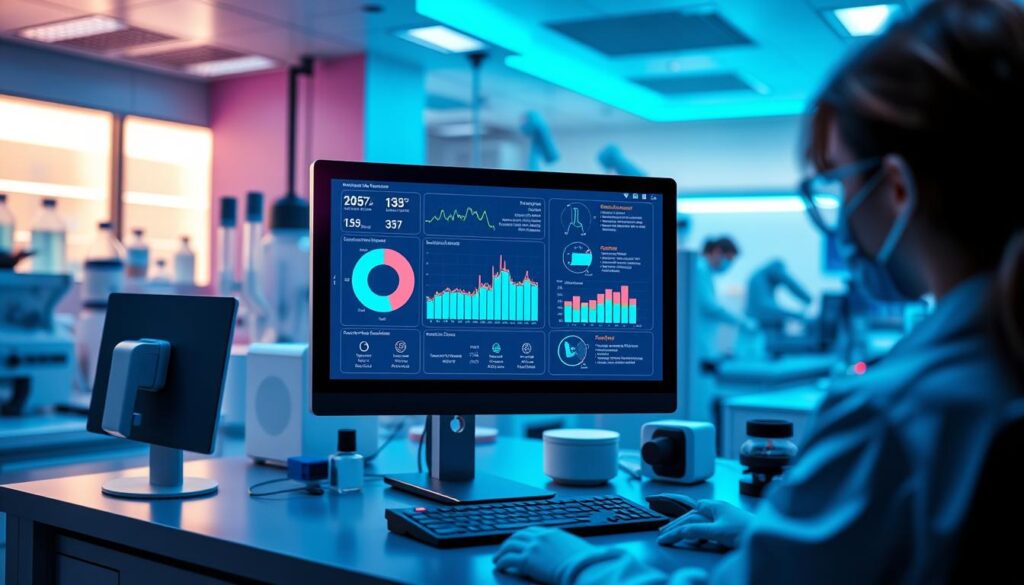
Pros and Cons of Each LIS Solution
Choosing the right Laboratory Information System (LIS) is key for your lab. It’s important to look at the good and bad sides of each top choice. This helps find the best match for your lab’s needs.
LabWare LIS Pros and Cons
LabWare LIS is known for being very customizable. This lets labs adjust the system to fit their unique needs. But, it can be hard for new users to learn because of all the options.
STARLIMS Pros and Cons
STARLIMS is known for being reliable and growing with your lab. It helps labs follow important rules. It also works well with other systems. But, it might cost more, and setting it up can take a lot of time and effort.
LabVantage Pros and Cons
LabVantage offers a lot of features and works well with other systems. This makes it great for labs that need a lot of options. But, it might be hard for new users to get used to, needing extra training.
Every LIS has its own good and bad points. You need to think about what your lab needs, how it works, and what you can spend. Knowing the pros and cons of each can help you choose the best one for your lab.
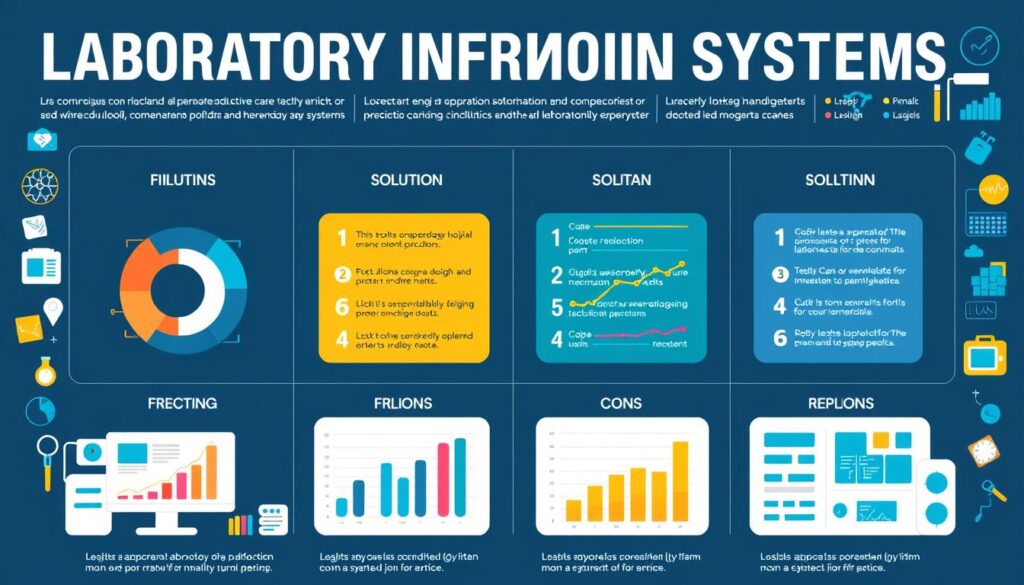
Pricing Comparison for LIS Solutions
Choosing the right Lab Data Management Solutions or Medical Testing Automation system is key. The cost is a big factor. LIS providers have different pricing, like subscription or one-time payments. Each has its own benefits and things to think about.
Overview of Pricing Models
LIS prices vary a lot. Some charge by subscription, others by one-time payment. The cost depends on your lab’s size, needed features, and how you want to use it.
Many LIS providers also offer special pricing. They make sure the solution fits your budget and needs.
Subscription vs. One-Time Payment
- Subscription-based LIS: You pay a monthly or yearly fee. It’s good for labs with less money, as it spreads the cost.
- One-time payment LIS: You pay a big sum upfront. It might cost more at first, but can save money in the long run.
What Influences the Price?
Several things affect LIS prices:
- Lab size: Bigger labs might get discounts, while smaller ones might pay more per user or test.
- Feature requirements: Labs needing more features will pay more.
- Deployment method: Cloud-based LIS costs less upfront but more over time. On-premises costs more at first but less later.
- Customization needs: Making the LIS fit your lab’s needs can cost more but might make things more efficient.
When looking at LIS prices, think about the total cost. This includes the initial cost, ongoing fees, and support. Knowing about different pricing models helps you choose the best Lab Data Management Solutions or Medical Testing Automation for your lab.
Compliance and Regulatory Standards
Keeping up with regulations is key for pathology labs today. The healthcare world faces tough rules like HIPAA and FDA 21 CFR Part 11. Laboratory Information Systems (LIS) help labs follow these rules well.
The Importance of Compliance in Pathology Lab Information Management
Following rules is very important in healthcare and labs. Bodies like CLIA and HIPAA set rules labs must follow. A good LIS helps labs meet these rules by keeping data safe and private.
Common Regulations Affecting Laboratory Information Systems
The US LIS market has many rules to protect patient data. HIPAA and CLIA are big ones. Labs must follow these to keep trust with patients and others.
How Top LIS Solutions Meet Compliance Demands
Top LIS systems have strong features for following rules. They help labs with things like keeping records safe and controlling who can see data. This makes labs ready for audits and keeps data safe.
Leading LIS providers also follow standards like ISO 15189. This shows they care about quality and following rules. As healthcare changes, LIS systems must keep up too.
In short, LIS systems with strong compliance features are vital for labs today. They help labs keep data safe, follow rules, and focus on their main job. This way, labs can provide accurate and secure tests.
Customer Support and Training Resources
Getting a good Laboratory Information System (LIS) needs great support and training. You need reliable help to make sure your LIS works well. This keeps your lab running smoothly.
Importance of Support in LIS
An LIS is a big software that handles lab work, like tracking samples and reporting results. You need good support to fix problems, answer questions, and learn new things. Good support helps you use your LIS to its fullest and follow rules.
Available Training Options
- User manuals and documentation
- Video tutorials and online training modules
- Live webinars and virtual classroom sessions
- On-site training workshops and hands-on sessions
- Comprehensive training programs for different user roles and skill levels
Community and Online Resources
Top LIS providers have online groups and forums. Here, you can meet other lab workers, share tips, and find more help. These places have guides, answers to common problems, and chances to talk to others. Being part of these groups keeps you up-to-date with new things and ways to improve your lab.
| LIS Provider | Customer Support Channels | Training Resources |
|---|---|---|
| CGM LABDAQ |
|
|
| CGM SCHUYLAB |
|
|
| CGM AP EASY |
|
|
When looking at LIS options, check the support and training. Good support and training mean your Laboratory Reporting Systems and Specimen Tracking Software work well.
Integration Capabilities of Top LIS
Top Anatomic Pathology LIS and Best Laboratory Information Systems (LIS) need to integrate well. They work with lab tools, electronic health records (EHR), and ERP systems. This makes data collection automatic, improves workflow, and cuts down on manual work.
Integrating with Laboratory Instruments
LIS software tracks samples in real-time. It makes sure samples are correctly identified at every step. This helps labs work faster and avoid losing or misidentifying samples.
A good LIS gives each sample a unique barcode. This makes managing samples easier and faster.
Connecting with EMR/EHR Systems
Linking lab tools and processes to one LIS platform cuts down on mistakes. It stops sample mix-ups and delays. LIS modules make lab work automatic, cutting down on manual entry.
They also make it quicker to get patient info and test orders to EHR/EMR systems.
The Role of APIs in Integration
APIs help systems talk to each other. They make sure data flows freely. This keeps labs running smoothly and helps them focus on patient care.
| Feature | Benefit |
|---|---|
| Seamless integration with instruments | Automated data collection, improved workflow efficiency, and reduced manual work |
| Connectivity with EMR/EHR systems | Streamlined pre-analytic workflows, reduced errors, and enhanced patient care |
| Robust API-driven integration | Prevents data silos, improves overall laboratory operations |
“Efficient integration capabilities are a hallmark of the best Laboratory Information Systems (LIS), enabling labs to streamline operations, enhance data management, and deliver superior patient care.”
Future Trends in Laboratory Information Systems
The healthcare world is changing fast. The future of Laboratory Information Systems (LIS) looks exciting. Trends include more automation, AI, cloud-based systems, and better data analysis.
Automation and AI Integration
AI and machine learning are changing LIS. They make data analysis and decision-making better. Automation now helps with sample handling and result interpretation too.
This mix of Clinical Laboratory Software and AI makes things faster and more accurate.
Cloud-Based Solutions
Cloud-based Lab Data Management Solutions are becoming more popular. They offer better access and lower costs. These systems make sure data flows smoothly between different healthcare areas.
Real-Time Data Analytics
The future of LIS includes better data analysis. Advanced tools give deep insights into lab performance and patient trends. This helps make better decisions for better care.
“The integration of advanced technologies such as AI and machine learning in LIS is projected to improve diagnostic speed by up to 50% in the future.”
These new trends in Clinical Laboratory Software and Lab Data Management Solutions will change LIS. They promise better efficiency, accuracy, and care for patients.
Conclusion: Choosing the Right LIS for Your Lab
Finding the right Laboratory Information System (LIS) or Laboratory Information Management System (LIMS) is key. You need to think about what your lab needs, how it will grow, and what rules it must follow. Also, don’t forget about your budget.
Look for a system that is easy to use. It should work well with other systems and let you customize it. Good support from the vendor is also important.
Key Takeaways
Most labs see better work flow and more accurate data after getting a LIS or LIMS. About 86% of labs say they work better. And 92% say their data is more accurate.
Also, 95% of labs meet rules like CLIA, HIPAA, and GDPR with these systems.
Final Recommendations
When looking at LIS or LIMS options, check them out well. Ask for demos and think about the costs over time. Look for systems that can grow with you, work with other systems, and can be customized.
Make sure it’s easy for your team to use. This will help your lab run smoothly.
Next Steps for Interested Buyers
If you’re looking for a new LIS or LIMS, start by knowing what your lab needs. Look at vendors’ reputations and how they handle rules. Talk to them to make sure their system fits with your lab’s current setup.
Make sure it meets your future needs and budget too.






